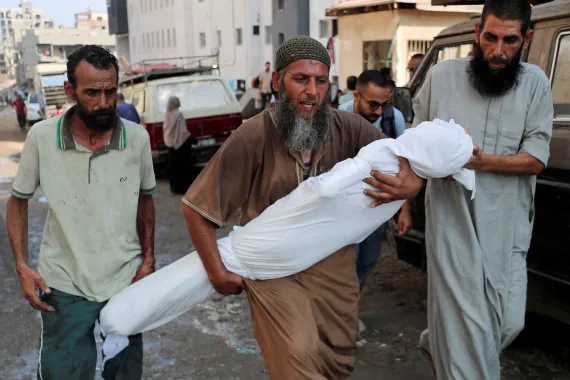The violence between Israel and Hamas has intensified, despite ongoing ceasefire negotiations. As of July 24, 2025, both sides are engaged in indirect talks via mediators in Qatar’s capital, Doha, with Hamas reportedly submitting its response to Israel’s proposed 60-day ceasefire.
Israel proposed a ceasefire deal to Hamas, which includes provisions for the entry of humanitarian aid, withdrawal of Israeli forces from certain areas, and security guarantees to ensure a lasting end to the conflict. However, Hamas has raised several amendments, particularly regarding the conditions of aid entry and territorial withdrawals. Israel is currently reviewing Hamas’s response.
The conflict has resulted in significant casualties on both sides, with many civilians in Gaza suffering from the ongoing Israeli bombardments.
Since the start of the war in October 2023, Gaza has seen widespread devastation. In the latest wave of attacks, at least 8 Palestinians were killed in central Gaza early on July 24, 2025, according to medical sources at Al-Aqsa Martyrs Hospital. In southern Gaza’s Khan Younis, at least two people were killed when an Israeli attack struck a tent sheltering displaced families.
The humanitarian crisis in Gaza is dire, with food and medical supplies running dangerously low. Medical staff are working under extreme stress, often without adequate resources. Sam Rose, acting director of the UN Relief and Works Agency (UNRWA) in Gaza, described the situation as “unforgivable” as the world watches the suffering continue. Many UNRWA staff are themselves displaced but continue to work in hospitals and other critical facilities.
On the Israeli side, the toll is also significant, with at least 865 soldiers reported killed since the conflict began. An Israeli soldier was recently seriously injured in southern Gaza. The Israeli government has been under increasing pressure to end the conflict but insists on dismantling Hamas’s military capabilities before agreeing to any ceasefire.
Tensions are also high in the occupied West Bank, where Israeli forces have been carrying out raids and arresting Palestinians. In the latest incident, two Palestinian minors, aged 15 and 17, were killed by Israeli soldiers in the town of al-Khader, south of Bethlehem.
Additionally, the recent vote in Israel’s Knesset to impose sovereignty over the West Bank has sparked outrage. While the motion is symbolic and non-binding, Palestinian groups view it as a dangerous escalation that could further erode the chances for peace.
International humanitarian organizations, including Save the Children and Médecins Sans Frontières (Doctors Without Borders), have called for an immediate ceasefire and for the opening of border crossings to allow for the safe delivery of food and medical supplies. In a joint statement, the organizations warned of mass starvation in Gaza if the situation does not improve.
China has expressed concern over the worsening situation, urging both Israel and Hamas to prioritize humanitarian efforts and engage in meaningful dialogue.
As both sides review the ceasefire proposals, there is a glimmer of hope that negotiations could bring an end to the violence. However, deep mistrust and competing demands remain obstacles to achieving a lasting resolution. The international community continues to pressure both Israel and Hamas for a peaceful solution, but with the humanitarian crisis in Gaza worsening daily, the clock is ticking.



